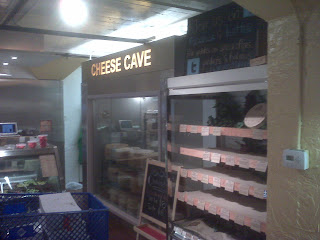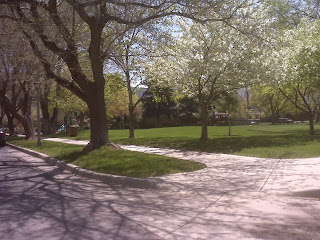I had a discussion with one of Salt Lake's traffic engineers about why they do this, and where it makes the most sense. He said it has everything to do with the location of bike lanes.
Notice that the cars have to cross over the bike lane to get to their parking spots. By having drivers back into their stall, it makes it easier to see bicycles when exiting the stall, making this situation safer for the bicyclists. Drivers still have to reverse over the bike lane when entering the stall, but the drivers have a better view of the oncoming bicyclists at this time.
In some cities, people have revolted and adjacent businesses demanded that reverse angle parking be removed. However, in this location, is seems to be working just fine.




























